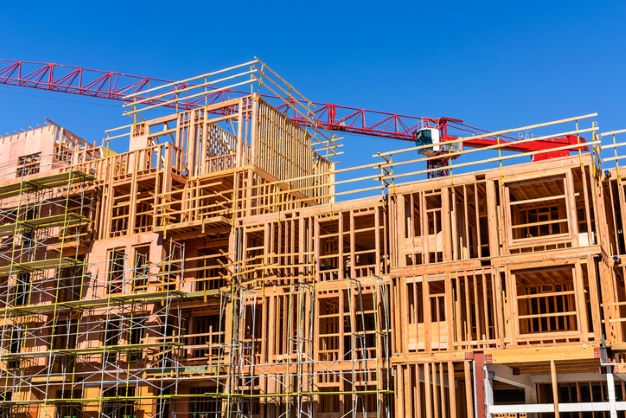The Los Angeles City Council’s Budget and Finance Committee began holding meetings to evaluate Mayor Karen Bass’s proposed 2024-25 fiscal year budget. Her proposed budget of $12.8 Billion is about 2 percent lower than that of the current fiscal year that ends June 30.
During this week’s budget hearings, representatives of individual city departments could explain the budget for their department and give their thoughts on it. These hearings occurred Tuesday through Thursday, and there will be two more on Monday and Wednesday of next week.
Here are a few takeaways from this first week of budget hearings.
Revenue stagnates as the city feels inflation impacts
On a macro level, Los Angeles avoided the impacts of inflation when they were at their worst. Still, while the city’s General Fund budget increased by 1 percent from the prior year in this proposed budget, other funds are projected to have over 8 percent decreased revenue from fiscal year 23/24.
The result is a stagnating revenue reduction from one of the city’s largest sources of funds: sales tax. A decrease of over 4.5 percent in sales tax revenue is projected in this budget stemming from people’s decreased shopping habits.
“We actually received an initial bump when the onset of inflation was most severe,” City Administrative Officer Matthew Szabo said at Tuesday’s budget hearing, “But we are now seeing inflation have an impact on consumer behavior and folks are spending or buying less under the higher prices.”
Sales tax is the third largest source of tax revenue the city’s General Fund receives, with the $713,603 accounting for almost 9.5 percent of the total money the city brought in the 2022-23 fiscal year. That revenue dropped to $680,850 last fiscal year and the proposed budget projects sales tax revenue at $691,035 for this coming fiscal year.
The other two major General Fund tax revenues — property and business tax — are also expected to show limited growth in the upcoming fiscal year. Business tax receipts are expected to increase by less than 2 percent, falling short of the original optimistic predictions from last year’s proposed budget.
But perhaps the most detrimental piece is the stagnation of property tax revenue. Making up almost 35 percent of the projected General Fund revenue, property tax revenue is expected to increase by less than 5 percent despite increased interest rates.
“Property tax, for which reported assessed value growth of 5.9 percent exceeds budgeted growth of 5.0 percent, is predicted to end below budget,” the revenue report provided with the budget stated, “Partly due to lower supplemental receipts, higher refunds, and delinquent payments.”
Feared job cuts are part of the proposed solution to address deficit
There were rumblings prior to the release of the budget that significant job cuts were coming to city departments in Los Angeles, and the proposed budget brought those fears one step closer to reality.
A total of 2,139 positions in the city — mostly vacant according to Szabo — are proposed to be eliminated in this budget. These eliminations make up a large portion of the $408 million in spending cuts, helping to offset the expected $412 million in spending in this projected budget.
“These position eliminations and other reductions are absolutely necessary,” Szabo said, “To absorb the more than $400 million in new direct costs this year alone.”
City Controller Kenneth Mejia — who has been vocal about the negative impact the cuts would have on his department and the city as a whole — asked the committee to consider a different approach that would not delete the positions from city departments, but would also not reserve funds for vacant positions.
Mejia noted that a similar practice was used for the LAPD, where the city authorizes over 10,000 officers, but only funds up to 8,900. He explained that unlike many of the departments in the city, the City Controller’s office is seeing all of its vacant positions eliminated. This would leave the department with 140 positions, over 25 percent less than it had just before the Great Recession.
“There is no hope in recovering [those positions] once they are eliminated,” Mejia said during his presentation during Thursday’s budget hearing.
LAPD continues to dominate departmental allocations
With employee compensation increases being the main source of increased spending, it is only natural that the largest department in the city continues to dominate funding.
LAPD sworn and civilian officers comprise over 40 percent of the 34,263 city-authorized positions in the budget, representing over $1.87 billion in salary obligations. Consequently, the LAPD’s budget represents the largest of any department in the city, sitting a hair under $2 billion.
The extent of police spending has been a controversial topic for several years, and the council members on the committee spent more than 30 minutes asking interim Police Chief Dominic Choi various questions.
But before Choi was called up to speak, Councilmember Traci Park — who represents the Westside’s 11th Council District — provided a statement professing her belief in giving LAPD ample resources.
“While we have seen a rise in home invasions, commercial burglaries, auto theft, and countless violent crimes, our police officers have been forced into an impossible position: [having] to do more for our constituents with considerably less,” Park said.
Park expressed her concern for overtime pay for civilian officer personnel, arguing low civilian officer levels hamper critical aspects of the department’s operations and need to be invested in.
“Without proper investment in LAPD civilian overtime funding, Park said, “Police Service Representatives will continue to be understaffed, which leads to long 9/11 wait times.”
Homelessness spending slashed as budget pivots to maintaining programs
Spending on homelessness programs was cut by over 25 percent in this budget, with an over $325 million cut in the budget bringing total spending to $950 million. There are no new capital acquisitions planned, and the city is transitioning from expanding its homelessness-centered programming to maintaining what it currently offers.
Among these cuts is a $182 million decrease in spending of funds from 2016’s Proposition HHH, which is nearing the end of its funding capacity. The prop focuses on providing funding for the development of supportive housing in the city, but city staff noted at Tuesday’s budget meeting that there were no property acquisitions budgeted for homelessness programs.
“The capital expense that we’ve incurred to develop all of [our] capacity were already incurred,” Deputy Mayor of Finance, Operations, and Innovation Matt Hale said.
Federal assistance related to tackling the homelessness crisis is also set to fall off this fiscal year, with just $5 million expected for Project Homekey from the COVID-era American Rescue Plan after it provided $54 million for the program last year.
The expectation is that the new projected homelessness budget will focus on maintaining the progress made by the programs currently in place, including navigation centers, A Bridge Home locations, and tiny homes, among other programs. Notably, Inside Safe would receive an $8 million increase in funding in this proposed budget, a 5 percent jump.
“[They will] all continue,” Hale said of these homelessness programs, “Without any meaningful reductions proposed in the range of services being provided.”
Reserve Fund closes in on dangerous threshold
Another consequence of the budget crisis the city faces is the whittling down of the city’s Reserve Fund. While it sat at $648 million — 8.2 percent of the General Fund — last July, it has since decreased to barely meet the city’s requirements of a 5 percent reserve fund threshold.
The Reserve Fund consists of two primary accounts — an Emergency account and Contingency account — that are used to cover unforeseen expenditures, emergencies, and General Fund revenue shortfalls
According to Szabo, city policy dictates that the Reserve Fund is to total at least 5 percent of the General Fund, aiming for at least 10 percent as a more comfortable level.
Also supplementing the Reserve Fund is the Budget Stabilization Fund — where surplus money from past years is placed to further cover budget shortfalls. Including this and other small supplementary funds has the Reserve Fund at just under 8 percent of the General Fund, noticeably below the 10 percent the city hopes to see without these extra funds.
Szabo said that not hitting that goal removes much of the breathing room that the city has related to overspending, a particularly pertinent concern given the significant overspending last year highlighted by $147 million more in liability claims than expected.
“We had the fortune and the privilege this year of relying on a very healthy reserve fund to compensate for underperforming revenues and overspending,” Szabo said. “A 5 percent reserve fund virtually eliminates that flexibility and that cushion.”
Image is a Screenshot from the Budget Report.
Stay informed. Sign up for The Westside Voice Newsletter
By clicking submit, you agree to share your email address with Westside Voice. We do not sell or share your information with anyone.








